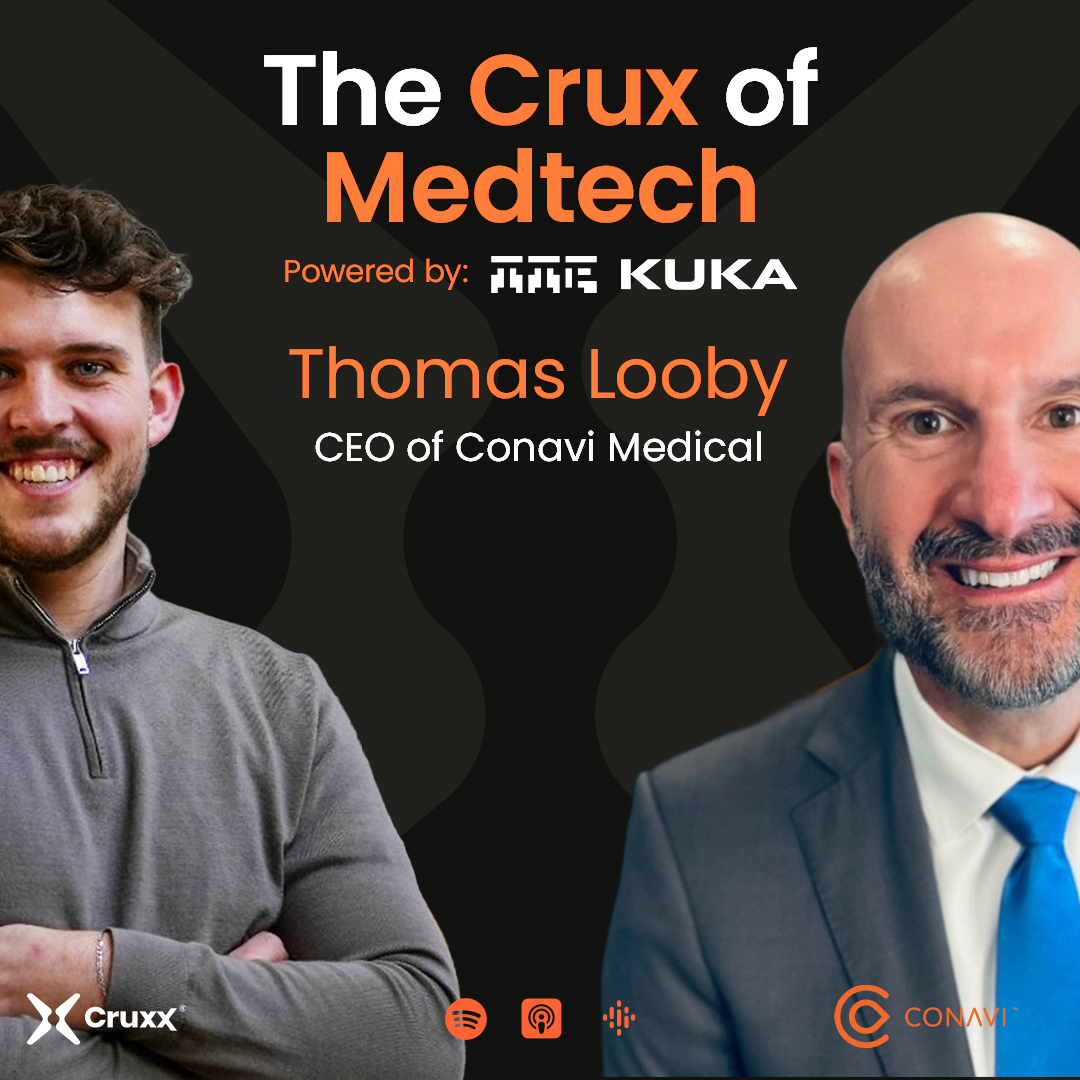Welcome to season 3 of The Surgibots Podcast, powered by Cruxx.
Dual-Modality Imaging That Rewrites PCI Outcomes with Thomas Looby
Welcome to season 3 of The Surgibots Podcast, powered by Cruxx.

The Surgibots Podcast is a premier platform for discussing cutting-edge advancements in surgical robotics. In Season 3, Episode 2, host Henry Norton welcomed Sabeen Shaikh, Partner at Life Sciences Consultants (LSC), to delve into the evolution of surgical robotics, adoption challenges, and future trends shaping the industry. With over 20 years of experience spanning MedTech giants like Stryker and Medtronic, Sabeen offered invaluable insights into the complexities and opportunities in this transformative field.
This episode covered a wide range of topics, from technological advancements to the strategic shifts driving robotics adoption, making it essential reading for professionals in healthcare, MedTech, and investment sectors.
Sabeen’s career journey is a testament to her expertise in surgical robotics and life sciences. Starting her career at Stryker Navigation, she played a pivotal role in launching the Libere image-guided surgery system in the U.S. market. After moving through leadership roles at Medtronic and contributing to operations in Australia and New Zealand, she transitioned to consulting. At LSC, she co-leads the MedTech practice, advising global corporations, startups, and investment funds on upstream and downstream commercial strategies.
Having been at the forefront of surgical robotics since its inception, Sabeen highlighted how the field has evolved over two decades. Early systems like Stryker’s Libere faced significant hurdles, including:
Despite these challenges, advancements in preoperative planning, intraoperative execution, and outcome tracking have propelled surgical robotics into the mainstream.
Today, only 20% of surgeons use robotic systems regularly, a statistic that underscores ongoing barriers to adoption. Sabeen identified key issues:
Addressing these challenges requires a nuanced understanding of surgeon behavior and a focus on simplifying systems while retaining essential functionalities.
ASCs, or day surgery centers, are revolutionizing healthcare delivery by providing efficient, cost-effective environments for outpatient procedures. Sabeen emphasized the growing importance of ASCs in orthopedic, spine, and cardiovascular surgeries. Factors driving this shift include:
The debate between closed and open platforms is a pivotal one. Closed platforms, designed to work exclusively within a single company’s ecosystem, drive implant sales but limit flexibility. Conversely, open platforms offer compatibility with multiple systems, appealing to ASCs but challenging traditional business models.
Sabeen argued that the future lies in data-driven business models, where insights from preoperative to postoperative phases enable better decision-making and outcome optimization. This shift will redefine profitability in the robotics industry.
Strategic acquisitions play a critical role in the growth of surgical robotics. Sabeen outlined what large players look for in startups:
Startups that address unmet needs and offer unique value propositions are well-positioned for acquisition.
Looking ahead, Sabeen shared bold predictions for the next decade:
Sabeen’s role on the Forbes Business Council underscores her influence in the MedTech ecosystem. Through her Forbes series, she aims to address gaps in innovation, investment, and strategy, drawing from her global experience in healthcare.
Sabeen Shaikh’s insights on The Surgibots Podcast provide a comprehensive look into the past, present, and future of surgical robotics. As the field evolves, addressing adoption challenges, embracing data-driven models, and fostering innovation will be critical to unlocking its full potential.
For professionals in MedTech and healthcare, staying informed about these trends is more than a necessity—it’s an opportunity to shape the future.

Dual-Modality Imaging That Rewrites PCI Outcomes with Thomas Looby

How to Survive FDA Battles and Boardroom Drama - with Sabine Bois